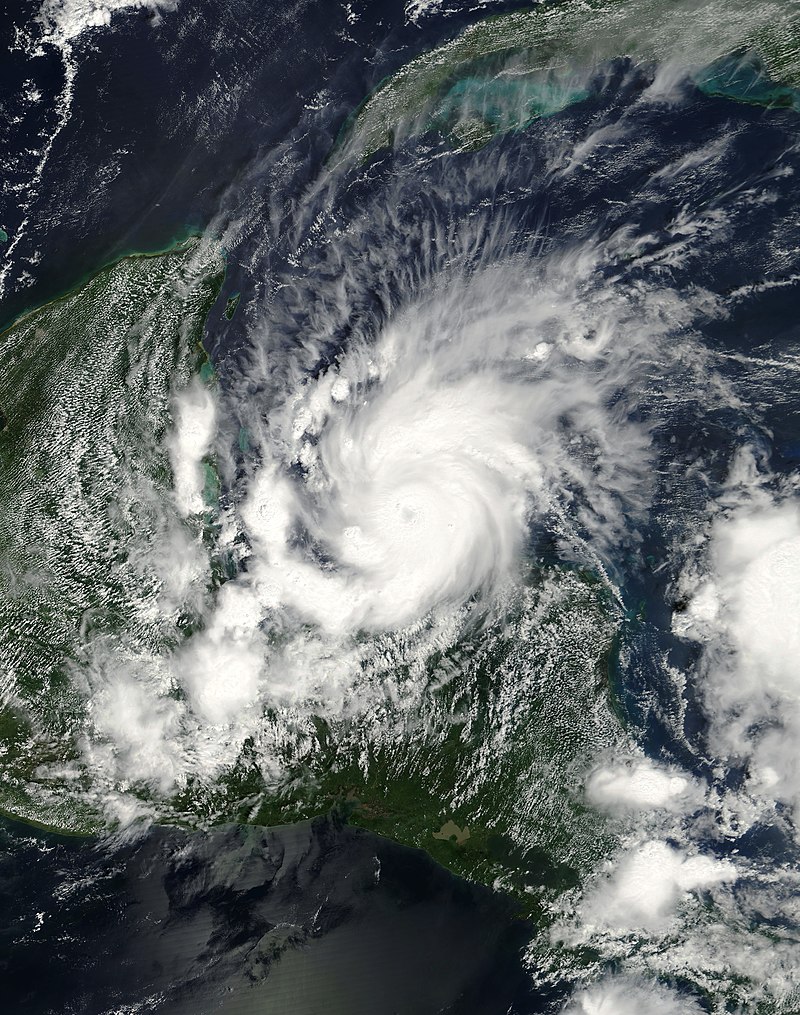This research article delves into the profound impact of Hurricane Iris, a small yet powerful Category 4 hurricane that struck Belize during the 2001 Atlantic hurricane season. The storm, which ranked as the second-strongest of the season after Hurricane Michelle, caused widespread destruction in Belize, particularly in the Toledo and Stann Creek districts. This article explores the trajectory, intensity, damage, casualties, and economic consequences of Hurricane Iris, highlighting the need for preparedness measures in the face of similar impending storms.
Introduction: On October 4, 2001, a tropical wave southeast of Barbados developed into Hurricane Iris, which rapidly gained strength as it traversed the Caribbean Sea. Although small in size, with an eye measuring only 7 miles (11 km) in diameter, Iris intensified into a formidable Category 4 hurricane, boasting peak winds of 145 mph (233 km/h). The storm made landfall near Monkey River Town in southern Belize on October 9, leaving a trail of devastation in its wake.
Impact on Belize: The effects of Hurricane Iris were concentrated in coastal towns south of Belize City. The Toledo district bore the brunt of the destruction, with approximately 72% of houses in the region sustaining damage. The Stann Creek district also suffered significant losses, with 50% of houses affected. Overall, 3,718 homes were damaged or destroyed across the nation, while more than 95% of homes in 35 villages in impoverished areas were leveled.
The storm left approximately 15,000 people homeless, leading to widespread displacement and necessitating assistance from the government and local chapters of the Red Cross. The toll on human life was tragic, as 24 individuals lost their lives in Belize. Among the casualties were 20 individuals who tragically perished when a scuba diving boat capsized near Big Creek. Additionally, the storm claimed eight lives and caused extensive damage to around 2,500 homes in neighboring Guatemala. In southern Mexico, two fatalities occurred due to heavy rainfall associated with Iris.
The economic ramifications were substantial, with the total cost of destruction in Belize amounting to $250 million (2001 USD). The banana industry, a vital sector of the country’s economy, suffered severe losses as high winds damaged vast stretches of forest and crops. The aftermath of Hurricane Iris posed significant challenges for cleanup, rebuilding, and rehabilitation efforts.
Preparedness and Lessons Learned: To safeguard against future hurricanes like Iris, it is crucial to prioritize preparedness and mitigation measures. Residents and authorities in hurricane-prone regions should be well-informed about the potential impacts and risks associated with these storms. Key steps to enhance preparedness include:
- Establishing robust early warning systems to provide timely and accurate information about approaching hurricanes.
- Developing and implementing evacuation plans, particularly for vulnerable coastal areas.
- Reinforcing infrastructure, including homes and buildings, to withstand hurricane-force winds and flooding.
- Educating communities about the importance of securing loose objects, trimming trees, and securing windows and doors in anticipation of storms.
- Promoting comprehensive insurance coverage to aid in recovery and reconstruction efforts.
Interesting Fact: As a direct result of Hurricane Iris in 2001, Belize witnessed a significant transformation in its disaster management strategies. The storm highlighted the need for improved coordination, response capabilities, and infrastructure resilience. Subsequently, Belize invested in enhancing its meteorological infrastructure, early warning systems, and disaster management institutions, fostering a more robust and proactive approach to hurricane preparedness and response.
Conclusion: Hurricane Iris, though small in size, left an indelible mark on Belize in 2001. As a Category 4 storm, it caused widespread destruction, loss of life, and economic hardship. The lessons learned from this devastating event underscore the importance of preparedness, response coordination, and long-term resilience-building efforts in hurricane-prone regions. By implementing comprehensive measures and investing in disaster management strategies, communities can minimize the impact of future hurricanes and protect lives and livelihoods.




Leave a Reply